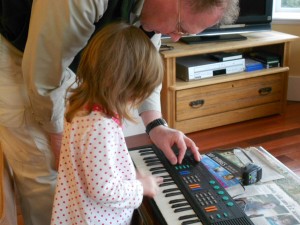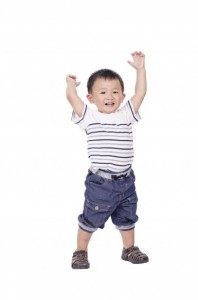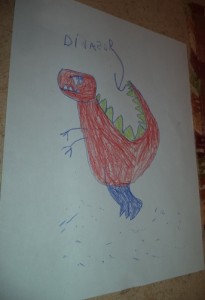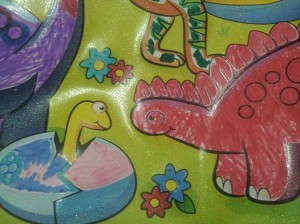Have you ever made snowflakes with tape, paint, and paper? It’s almost like magic to make invisible snowflakes appear and it’s very easy for little hands.
This project starts with a fairly thick piece of white paper. We used a sheet from the recycling. Tear off a strip of clear tape 2 to 3 inches long and tape it onto the page. (When we did this, I rubbed the tape on my jeans so that it didn’t stick too securely to the paper.) Keep track of where you put the tape because it’s hard to see! Use a second piece of tape and make an X, then another across the middle of the X to make a snowflake shape. Make more snowflakes in a few other places. It’s okay if some of the snowflakes overlap; they will still show up, even though you can’t see them yet.
Now comes the fun part, but cover the table, counter, or floor with newspaper or plastic. Using paint dabbers or brushes, kids cover the whole piece of paper with blue paint. The paper needs to be all blue, as much as possible. The paint doesn’t stick to the tape so the snowflakes start to appear. Once the paint is dry, carefully peel off the tape that you can now see. What’s underneath? Snowflakes!
This project gives kids a chance to strengthen the small muscles in the hands, fingers, and wrists. These muscles are still developing and need lots of exercise. Only one color of paint is needed for the sky which isn’t all that exciting, except for the snowflakes which start to show thru the color. It takes lots of effort and concentration to cover the whole page. As kids get distracted and then focus again, they can see what they need to do so this provides a built-in structure for attention. Painting is lots of fun and the snowflakes happen almost by magic. Well, the ones on the paper do. Maybe, could this make real ones appear?




